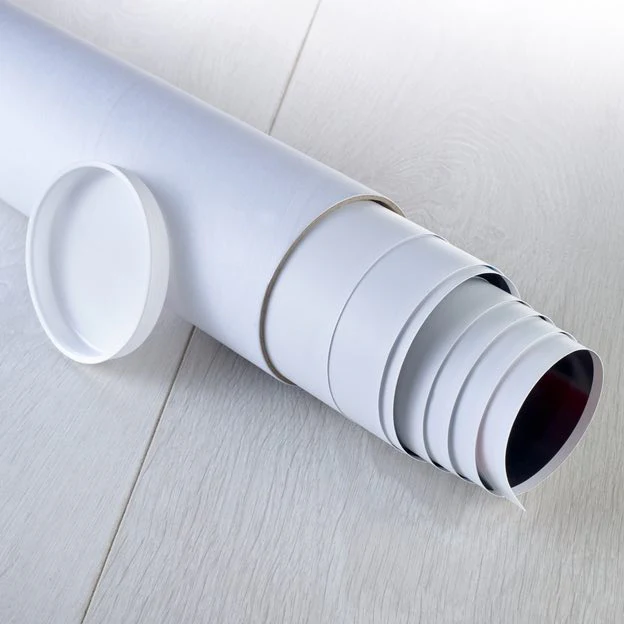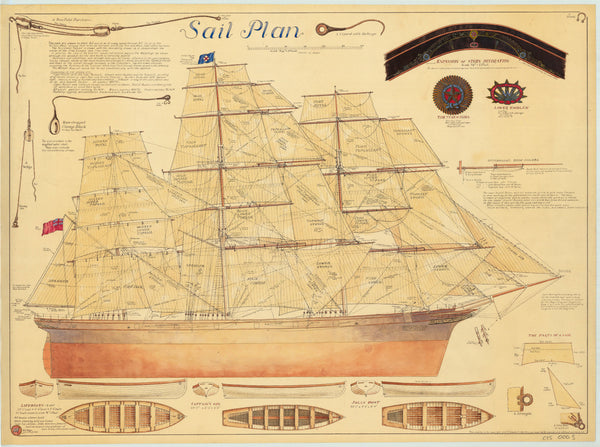!['Seru [Seru Epenisa Cakobau (Thakombau)] , on board, and Masomalua (in the hat), Octr 1849 [Fiji] by Edward Gennys Fanshawe](https://previews.magnoliabox.com/nmm/hero/pz4637/MUS-FAPC1114_850.jpg)
'Seru [Seru Epenisa Cakobau (Thakombau)] , on board, and Masomalua (in the hat), Octr 1849 [Fiji]
Image information
'Seru [Seru Epenisa Cakobau (Thakombau)] , on board, and Masomalua (in the hat), Octr 1849 [Fiji]
Mounted in album with PAI4605-PAI4636, PAI4638-PAI4670.; No.31. No. 31 in Fanshawe's Pacific album, 1849-1852. Captioned by the artist on the album page below the image, as title. Seru (1815-1883), whom Fanshawe in 1849 knew as Thakambau [sic] was eldest son of Tanoa, Vinivalu (paramount chief) of Bau, and from 1852 to 1874 the self- proclaimed and eventually recognized King of Fiji (see PAI4636). Fanshawe arrived in the islands knowing (and soon learning more) of his fearsome reputation, and immediately invited him aboard 'Daphne' on Sunday 29 September 1849 in order to convey the views he was charged with representing in Polynesia. Thakombau came accompanied, as interpreter, by the local Wesleyan missionary James Calvert (1813-1892), to whom he was greatly attached, though he did not convert to Christianity and abandon cannibalism until 1854. Fanshawe was surprised to find him cowed on coming aboard, since he knew he had shortly before spent two days on a Navy warship - the 'Havannah', from New Zealand. Thakombau frankly confessed, however, that while fearless in his own environment 'with these ships of war he felt himself quite powerless, and therefore was afraid' (p. 229). He soon recovered and greatly impressed Fanshawe, who 'showed him round the ship... gave him some luncheon' and later noted: ' He is a remarkably fine-looking man, quite the beau-ideal of a savage chief. Like many of the other chiefs he is more than six feet high, but I saw none with such deportment and dignity of carriage. His hair was frizzed out and covered with a napkin of thin native cloth (as is customary with chiefs), which gives it the appearance of a full white turban. He had a large fold of native cloth round his waist, consisting partly of his two trains wound round for convenience; these trains are long strips of cloth, one from before and one from behind, both of which trail a long way in the rear and denote a high chief. A little lamp-black about his face completed the costume' (Fanshawe [1904] pp. 229-30). Thakombau came aboard with five or six 'attendants', two shown here wearing the same chiefly headdress. The third, on the right, was another chief of Bau, Mosomolua (already baptised Hezekiah, see notes to PAI4631) whom Fanshawe described as 'a tall ungainly-looking personage, with a good deal of cunning in his countenance, which was not improved by a very shabby straw hat, which he had, I suppose, adopted as a mark of civilisation' (p. 226). The visitors are shown on 'Daphne's' quarterdeck, apparently about to go below, with a seaman by the wheel in the background. Fanshawe did nine drawings of Fiji and Fijians, including two studies of local weapons, PAI4631-PAI4639. This is one of only two such outline figure drawings in the Fanshawe collection (which he may have used in making his more formal watercolour portrait of Thakombau, PAI4736). The other such drawing of the Tahitian, Susan Young, on Pitcairn, is PAI4615.
Edward Gennys Fanshawe
Original size: 127 mm x 179 mm
- Image reference: PZ4637
- National Maritime Museum, Greenwich, London
Discover more
More by this artist
Search for similar images
Product images of 'Seru [Seru Epenisa Cakobau (Thakombau)] , on board, and Masomalua (in the hat), Octr 1849 [Fiji]
!['Seru [Seru Epenisa Cakobau (Thakombau)] , on board, and Masomalua (in the hat), Octr 1849 [Fiji] by Edward Gennys Fanshawe](https://previews.magnoliabox.com/nmm/far_corner/pz4637/MUS-FAPC1114_405.jpg)

![Detail of 'Seru [Seru Epenisa Cakobau (Thakombau)] , on board, and Masomalua (in the hat), Octr 1849 [Fiji] by Edward Gennys Fanshawe](http://prints.rmg.co.uk/cdn/shop/products/pz4637_5c634b25-f45a-4d33-a70e-744301e34ad0_1024x1024.jpg?v=1527869306)
Our prints
We use a 240gsm fine art paper and premium branded inks to create the perfect reproduction.
Our expertise and use of high-quality materials means that our print colours are independently verified to last between 100 and 200 years.
Read more about our fine art prints.
Manufactured in the UK
All products are printed in the UK, using the latest digital presses and a giclée printmaking process.
We only use premium branded inks, and colours are independently verified to last between 100 and 200 years.
Delivery & returns
We print everything to order so delivery times may vary but all unframed prints are despatched within 2-4 days via courier or recorded mail.
Delivery to the UK is £5 for an unframed print of any size.
We will happily replace your order if everything isn’t 100% perfect.

!['Seru [Seru Epenisa Cakobau (Thakombau)] , on board, and Masomalua (in the hat), Octr 1849 [Fiji] by Edward Gennys Fanshawe](https://previews.magnoliabox.com/nmm/nmm_standard/pz4637/MUS-FAPC1114_100.jpg)
!['Seru [Seru Epenisa Cakobau (Thakombau)] , on board, and Masomalua (in the hat), Octr 1849 [Fiji] by Edward Gennys Fanshawe](https://previews.magnoliabox.com/nmm/nmm_standard/pz4637/MUS-FAFP1114_black_100.jpg)
!['Seru [Seru Epenisa Cakobau (Thakombau)] , on board, and Masomalua (in the hat), Octr 1849 [Fiji] by Edward Gennys Fanshawe](https://previews.magnoliabox.com/nmm/nmm_standard/pz4637/MUS-CS1212_100.jpg)
!['Seru [Seru Epenisa Cakobau (Thakombau)] , on board, and Masomalua (in the hat), Octr 1849 [Fiji] by Edward Gennys Fanshawe](https://previews.magnoliabox.com/nmm/nmm_standard/pz4637/MUS-PCRD-SML_100.jpg)
!['Seru [Seru Epenisa Cakobau (Thakombau)] , on board, and Masomalua (in the hat), Octr 1849 [Fiji] by Edward Gennys Fanshawe](https://previews.magnoliabox.com/nmm/nmm_standard/pz4637/MUS-GCRD-SML_100.jpg)
!['Seru [Seru Epenisa Cakobau (Thakombau)] , on board, and Masomalua (in the hat), Octr 1849 [Fiji] by Edward Gennys Fanshawe](https://previews.magnoliabox.com/nmm/standard/pz4637/MUS-FAPC1114_100.jpg)
!['Seru [Seru Epenisa Cakobau (Thakombau)] , on board, and Masomalua (in the hat), Octr 1849 [Fiji] by Edward Gennys Fanshawe](https://previews.magnoliabox.com/nmm/standard/pz4637/MUS-FAFP1114_black_100.jpg)
!['Seru [Seru Epenisa Cakobau (Thakombau)] , on board, and Masomalua (in the hat), Octr 1849 [Fiji] by Edward Gennys Fanshawe](https://previews.magnoliabox.com/nmm/standard/pz4637/MUS-CS1212_100.jpg)
!['Seru [Seru Epenisa Cakobau (Thakombau)] , on board, and Masomalua (in the hat), Octr 1849 [Fiji] by Edward Gennys Fanshawe](https://previews.magnoliabox.com/nmm/standard/pz4637/MUS-PCRD-SML_100.jpg)
!['Seru [Seru Epenisa Cakobau (Thakombau)] , on board, and Masomalua (in the hat), Octr 1849 [Fiji] by Edward Gennys Fanshawe](https://previews.magnoliabox.com/nmm/standard/pz4637/MUS-GCRD-SML_100.jpg)
!['Seru [Seru Epenisa Cakobau (Thakombau)] , on board, and Masomalua (in the hat), Octr 1849 [Fiji] by Edward Gennys Fanshawe](https://previews.magnoliabox.com/nmm/far_corner/pz4637/MUS-FAFP1114_black_622.jpg)
!['Seru [Seru Epenisa Cakobau (Thakombau)] , on board, and Masomalua (in the hat), Octr 1849 [Fiji] by Edward Gennys Fanshawe](https://previews.magnoliabox.com/nmm/far_corner/pz4637/MUS-CS1212_622.jpg)



